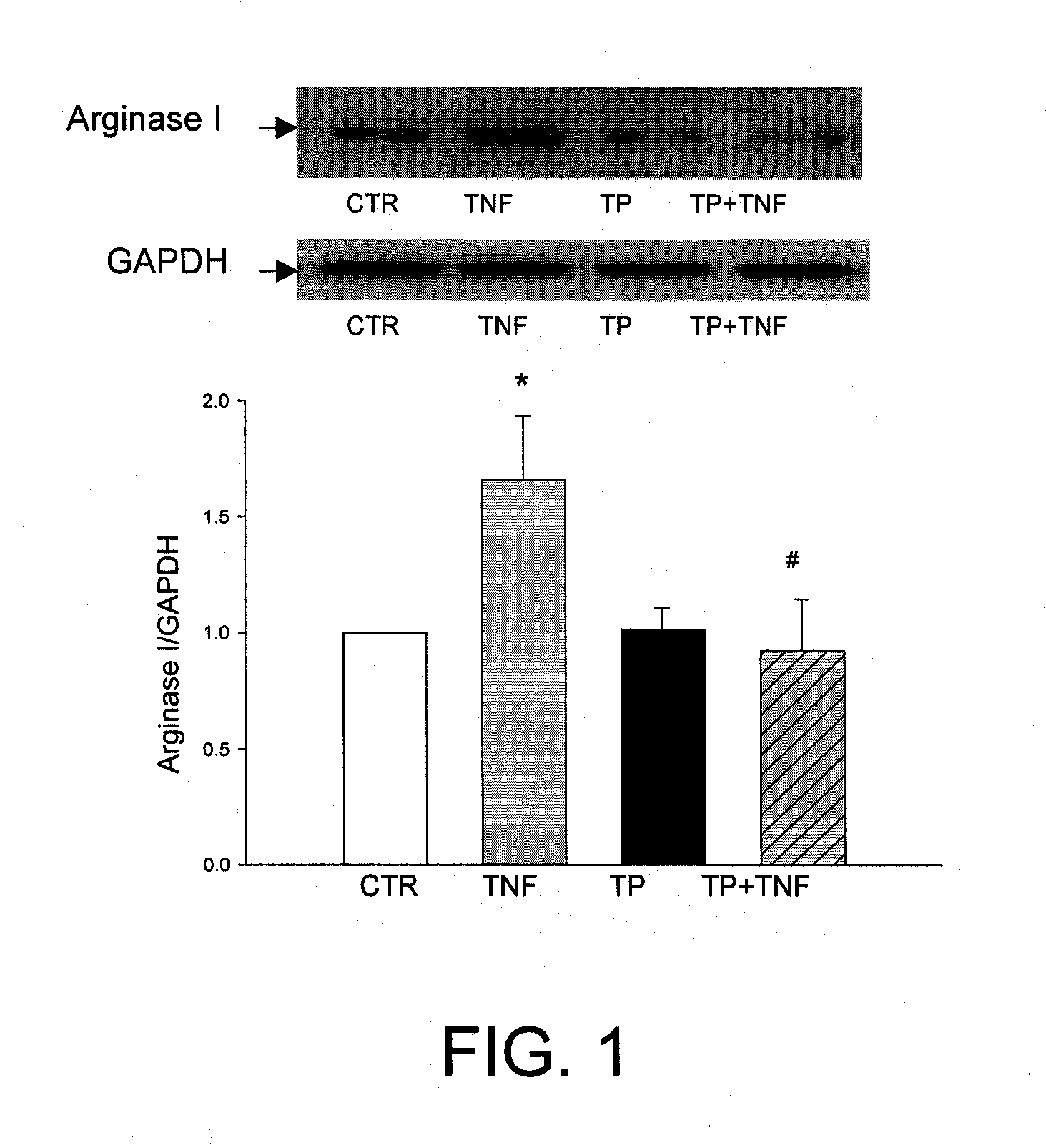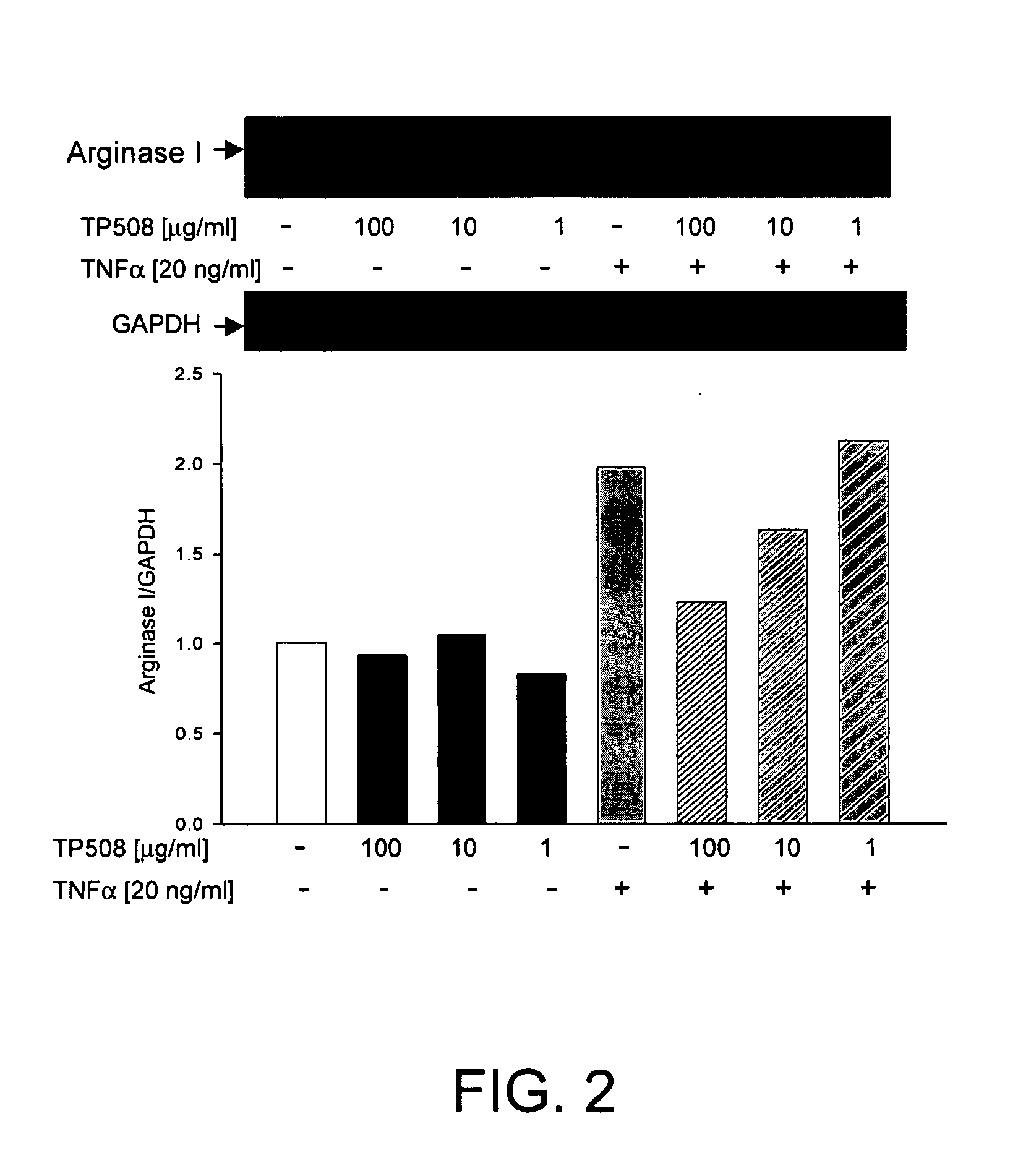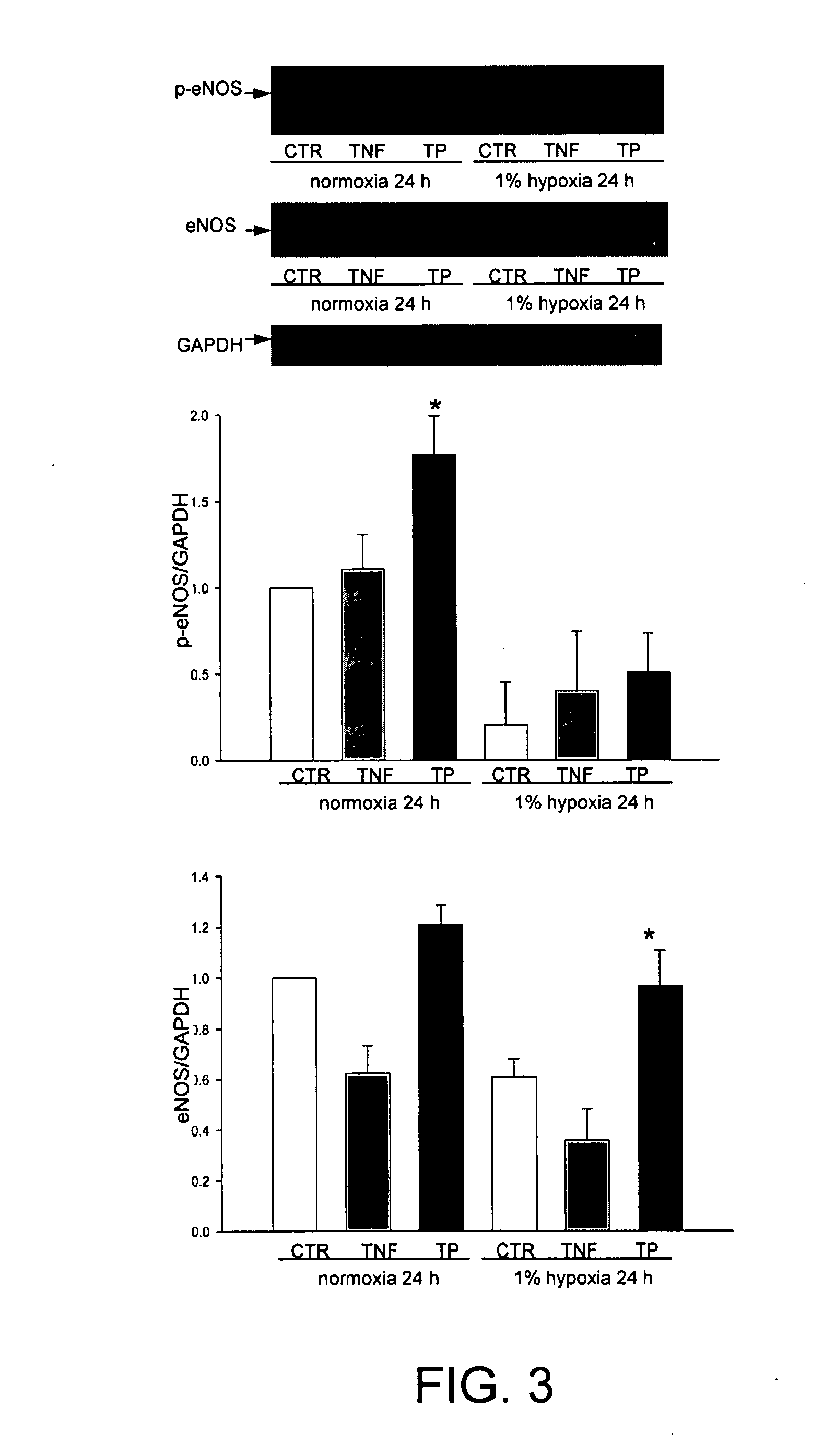Method of treating peripheral arterial disease
a peripheral arterial disease and treatment method technology, applied in the field of treating peripheral arterial disease, can solve the problems of poor wound healing, pain with exertion, restricted mobility, etc., and achieve the effect of reducing endothelial dysfunction or its effects
- Summary
- Abstract
- Description
- Claims
- Application Information
AI Technical Summary
Benefits of technology
Problems solved by technology
Method used
Image
Examples
example 1
Materials and Methods
[0104]Human coronary artery endothelial cells (HCAE cells, Lonza, Walkersville, Md.) were cultured in 5% CO2 at 37° C. in endothelial cell growth medium (EGM) supplemented with 2% fetal bovine serum and Single Quot supplements (Clonetics, San Diego, Calif.; containing epidermal growth factor, hydrocortisone, vascular endothelial growth factor, fibroblast growth factor, insulin growth factor, ascorbic acid, heparin, gentamycin, and amphotericin B). Cells were used between passages 4 and 6 for these studies. HCAE cells were plated at a density of 50,000 cells per well in 12-well plates and were grown for 3 days to reach confluency. Two-day post-confluent cells were treated with TNFα or TP508. Cells were then incubated in normoxic or 1% hypoxic conditions for the indicated times. In some experiments, cells were pretreated with TP508 for 1 h before TNFα stimulation. For RNA extraction, HCAE cells were cultured in 6-well plates.
RT-PCR
[0105]Tot...
example 2
TP508 Blocks TNFα Induced Upregulation of Arginase 1
[0109]As described above, ED and loss of NO dependent signaling can arise either from a decrease in NOS activity or by an increase in arginase activity that depletes cellular levels of L-arginine. In both hypoxia and inflammation, it has been reported that the level of TNFα is elevated and is thought to contribute to ED by affecting one or both of these NO related activities. To evaluate the potential effects of TP508 on ED, early passage human coronary artery endothelial cells (HCAE cells) were cultured under normoxic conditions and were treated with TNFα alone or with the combination of TNFα and TP508.
[0110]Western blots of HCAE cell lysates, using antibody specific for human type-1 arginase showed that TNFα treatment caused a significant increase in the expression of arginase 1 (ARG1) relative to control cultures (FIG. 1). As shown in FIGS. 1 and 2,
[0111]TP508 treatment alone had no effect on ARG1 expression, but completely bloc...
example 3
TP508 Stimulates eNOS Expression and eNOS Phosphorylation
[0112]Western blots of HCAE cell lysates, using antibody specific for eNOS phosphorylated at S1177 showed that TNFα treatment, or exposure of cells to hypoxic conditions (1% O2) for 24 h, reduced the expression of eNOS by 45%, relative to normoxic controls (FIG. 3). As shown, TP508 prevented the decreased expression of eNOS caused by hypoxia to retain eNOS expression levels at levels similar to those seen in cells cultured under normoxic conditions. In contrast, TP508 addition together with TNFα was not able to inhibit the TNFα induced decrease in eNOS expression (not shown). Under normoxic and hypoxic conditions, TP508 increased eNOS phosphorylation relative to normoxic and hypoxic control cultures 1.8-fold and 2.5-fold, respectively (FIG. 3). Although some of this phosphorylation may be due to increased expression of eNOS, the increased phosphorylation cannot be explained by increased expression alone. Additional experiments...
PUM
| Property | Measurement | Unit |
|---|---|---|
| length | aaaaa | aaaaa |
| concentration | aaaaa | aaaaa |
| concentrations | aaaaa | aaaaa |
Abstract
Description
Claims
Application Information
 Login to View More
Login to View More - R&D
- Intellectual Property
- Life Sciences
- Materials
- Tech Scout
- Unparalleled Data Quality
- Higher Quality Content
- 60% Fewer Hallucinations
Browse by: Latest US Patents, China's latest patents, Technical Efficacy Thesaurus, Application Domain, Technology Topic, Popular Technical Reports.
© 2025 PatSnap. All rights reserved.Legal|Privacy policy|Modern Slavery Act Transparency Statement|Sitemap|About US| Contact US: help@patsnap.com



